
Not every attraction is destined for greatness. Not every attraction stands the test of time.
And so far, our growing collection of in-depth Declassified Disaster entries has looked into the troubled pasts of some of the most flubbed, frustrating, and outright failed attractions ever designed. We've seen frazzled technology spell the end of Disneyland's Tomorrowland '98 and the Rocket Rods; we've watched as '90s cartoon comedy overtook a classic to create the dated Enchanted Tiki Room: Under New Management; SeaWorld's attempt to best Disney with Journey to Atlantis simply sank; a would-be update created the embarassing Journey into YOUR Imagination; and a blood-curdling classic became Disney's most despised attraction ever, Stitch's Great Escape. Our LEGEND LIBRARY is filled with stories of flopped and failed attractions.
Image: Disney
But even facing tone-deaf "upgrades," fried technologies, and outright embarassements, there may be no attraction on Earth that serves as a bigger symbol of an entire park's gradual decline in concept and quality than the Disney-MGM Studios' Backstage Studio Tour. Literally the would-be headliner of a cutting-edge park, the 25-year life of this doomed attraction mirrors the unthinkable reality faced by Disney's designers: their studio park was not going to survive. Today, we'll go backstage on the Backstage Studio Tour to see its lofty ambitions... and to see how its decline mirrors the abandonment of the park's purpose. Even Disney's most eager fans may be surprised at the tumultuous history of this disastrous ride...
Moving Pictures
Since the very first moving pictures, people the world over have been drawn to the silver screen. From the romance of the golden age of Hollywood to the advent of talking pictures, animation, and Technicolor, our culture is inseparably tied to the celebrity and stardom of cinema. The glamour of Tinseltown and the magic of the movies have been part of our society for generations.
And for as long as people have followed the golden glow of theater lights, they’ve been longing to see behind-the-camera… to live the lives of the stars, to see the drama of production, and to witness the wonders of “movie magic” that make the impossible look so real.
Image: Universal
Look no further than Universal Studios Hollywood where, in 1915 – over one hundred years ago – a 25-cent “studio tour” began offering tourists to the emerging new “Hollywood” a chance to walk past through the sets of “moving pictures” to see the still-young world of cinema.
Just a decade after Universal Studios opened, in 1925, Walt and Roy Disney moved their animation studio to a brand new facility located on Hyperion Avenue in Silver Lake, Los Angeles. Just a few years later, Mickey Mouse would hit the screen. And at once, letters began to pour in, as eager fans wondered why they couldn’t tour Disney’s studio to see Mickey in person. The answer was simple: Walt knew that the process of animation was decidedly less interesting than his studios’ fans would’ve imagined. Walking through the cramped studio watching men hunched over palettes wouldn’t provide the excitement people wanted.
Click and expand for a larger and more detailed view. Image: Disney
That’s why Walt started to develop the idea of transforming the lot adjacent to the studio into a Mickey Mouse Park with a recreation historic village, river boats paddling around an island, a Western town, stagecoaches, and a picnic park, all encircled by a steam train. We chronicled the in-depth story behind this would-be amusement park in its own standalone feature, but you know what happened: Mickey Mouse Park grew – both physically and conceptually – until it no longer fit on the lot on Riverside and Buena Vista.
Image: Disney
After years and years of planning, a more fully realized design – Disneyland – opened in the quiet town of Anaheim. By that point, Walt and his designers had intentionally and entirely left behind any suggestion of moviemaking or a connection to the studio. Disneyland wouldn’t show guests behind-the-scenes, it would place them into the scenes. Radically different from anything that had become before, Disneyland was built by filmmakers to be immersive, living, and habitable.
The Magic of the Movies
While Walt’s Disneyland may have intentionally turned the notion of a movie park on its head, Universal Studios Hollywood – just about an hour north of Anaheim – used its storied, cinematic assets to its benefit. We already mentioned that Universal began offering tours of its L.A. studio lot back in 1915, but the introduction of “talking pictures” with sound had rendered the tour obsolete, given that “Quiet on the set!” became the standard in the 1930s.
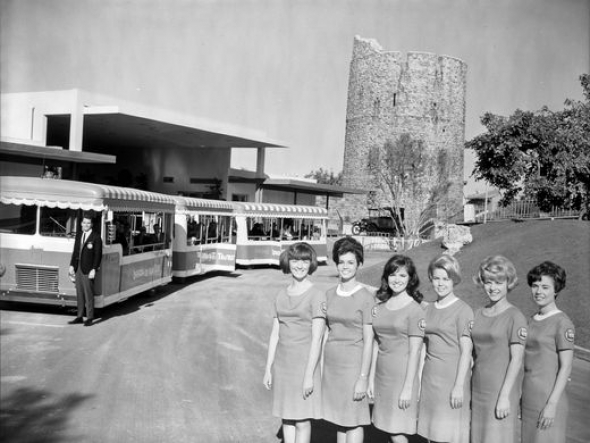
Image: Universal
It wasn’t until 1965 that Universal revived the Studio Tour in a more formalized way and began offering the tram-led Tour still known the world over today… In its earliest years, Universal’s Studio Tour was a multi-hour ride on “Glamour Trams” through Universal’s real backlots where actual filming with genuine stars might be taking place… on-board, guests would view familiar and landmark movie sets, get a glimpse of the dressing rooms of the stars, and see the authentic soundstages and behind-the-scenes facilities that powered the world of motion pictures.
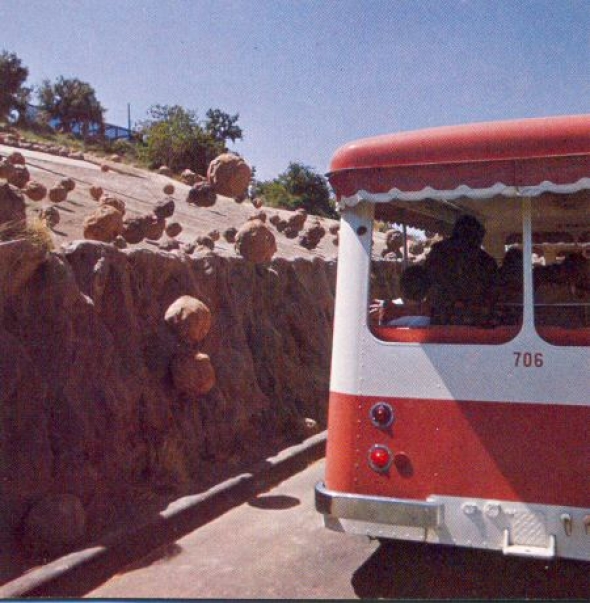
Image: Universal, via theStudioTour.com
The Studio Tour’s highlights, though, quickly became run-ins with staged special effects that gave guests a clearer understanding of how “movie magic” could bring unthinkable scenes to life. Guests were enthralled by such living demonstrations as a Mexican town that would flood and drain before your eyes; a menacing rockslide that reset for the next tram; and a dizzying, spinning “avalanche” tunnel that might give riders (or, as importantly, viewers) the sensation they were tumbling through falling snow.
Image: Ollie Harridge, Flickr (license)
Of course, the real headliners began to arrive in 1976, when the runaway hit film JAWS – literally the origin of the summer blockbuster – inspired the creation of a sincerely startling run-in with an unthinkable animatronic Great White. A decade later, King Kong Encounter set a new standard for animatronic encounters. In 1988, the Studio Tour added another spectacle, trapping guests in the 8.3 namesake of Earthquake.
Gradually, Universal Studios Hollywood began to add one-off thrills like E.T. Adventure and the famed Lost Legend: Back to the Future – The Ride, but its heart – its purpose for being – remained the Studio Tour. An hour-long headliner that not only peeled back the lens of Hollywood magic, but also offered a “best-of” menu of disasters-on-demand that thrilled Hollywood tourists.
Hollywood East
Image: Universal
For decades, Disneyland and Universal Studios Hollywood co-existed as Californian classics – each a must-see destination for very different reason. More peers than opponents, the two were regional day-trips.
All the while, Walt Disney World in Florida opened, then grew, then grew again. By the 1980s, Walt Disney World was already fulfilling its promise of becoming a “Vacation Kingdom of the World,” drawing guests from around the globe. Disney made Central Florida a vacation hotspot where once had resided sleepy towns and marshes. And as anyone would, Universal’s executives made the none-too-difficult decision that they, too, wanted a piece of property there.
Image: Universal
By the early 1980s, plans for a Universal Studios Florida were already in the works. If Disney had turned the unlikely Central Florida into a worldwide vacation destination, Universal hoped to turn it into a Hollywood East – a legitimate satellite Tinseltown that would become the new hotspot for directors and stars to shoot their films, with Universal Studios Florida as the place to do it.
One man stood in the way, and we bet you’ll recognize him… Read on…
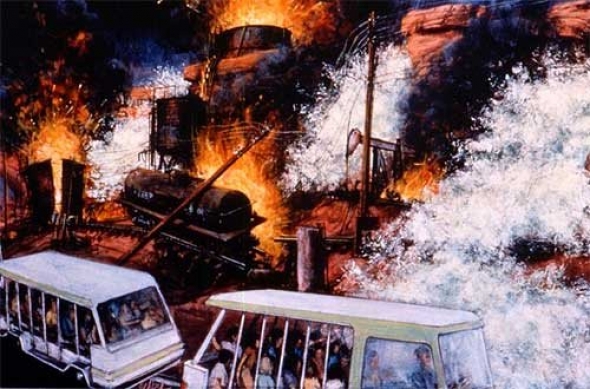
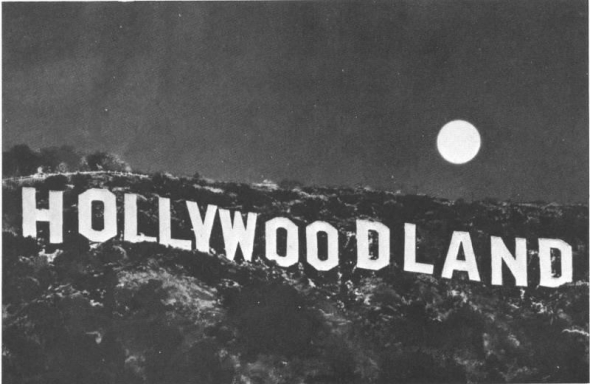
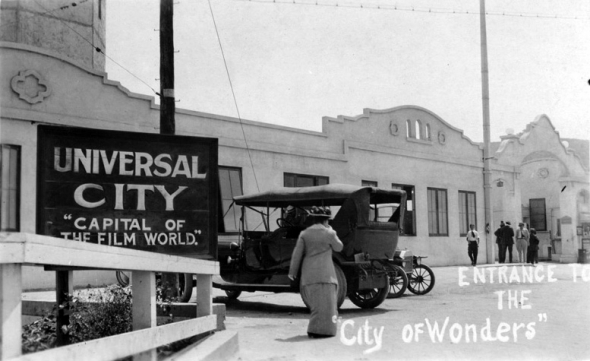
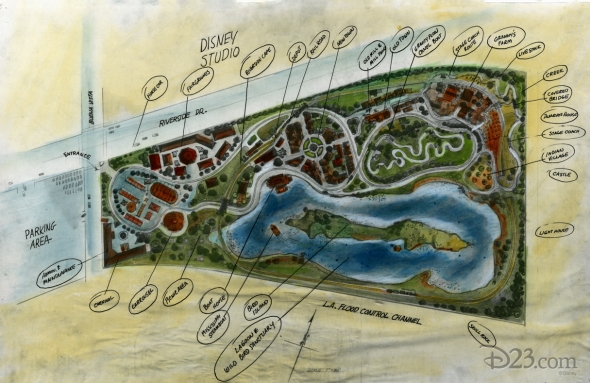
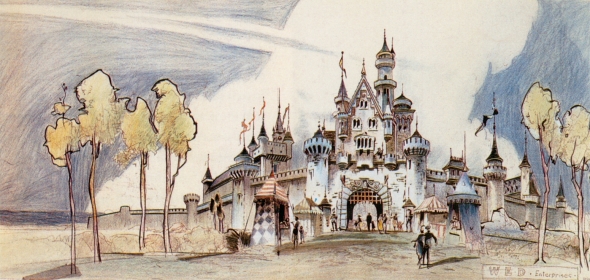
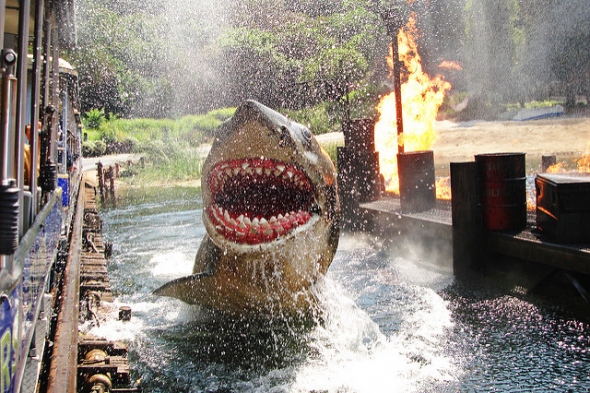
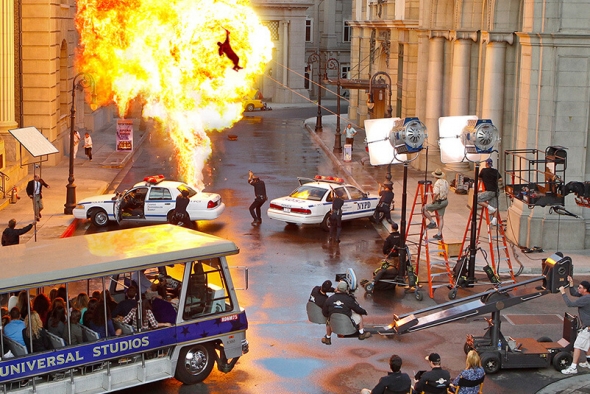
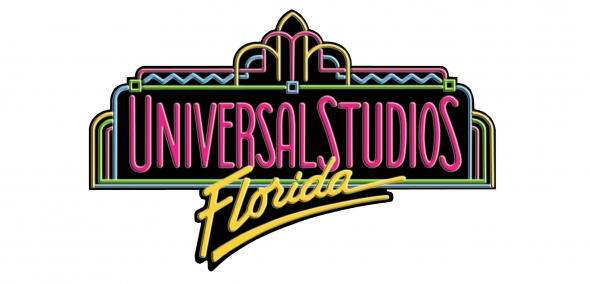

Comments
MGM Hollywood Studios did not fail. It was popular when it was a working studio. It filmed lots of movies, straight to DVD, and TV shows. The huge problem with MGM, MGM Studios pulled rights from Disney due to new ownership which killed Great Movie Ride. Disney stopped doing animation and movies due to cost of bringing everyone needed and fly them to Florida. It was cheaper to film in California. Now currently it is cheaper to film in Georgia.
We lost a True Disney Legend and was forced to resign Eisner. And family company had a Corporate Whore Ogre Called Iger who refused to listen to Disney Family Members. And we have a new Jackass Clown Chrome Dome who only cares about profits and hates Walt Vision. Walt would never charge for lightning. Walt would NEVER force vaccinations on HIS Cast Members and would call Chrome Dome Baldilock the Nazi and Fire him with a Mickey Mouse voice “haha haha”. Walt and Roy O Disney would have voted for Trump and never have Liberal/Socialists as Executives WALT would FIRE the WHOLE Executive Board for not being the Disney Image. Knowing and learning the Disney Image from my Cousin Diane Miller, current executives are the Disney Abomination!
I was a Guide on the Shuttle part of the Backstage Studio Tour in that first year.
I kept waiting to read why it was all such a failure. I know that Production at the studio never really took off, but I don't think anyone then, or now saw those early years as such a huge mis-step. The park has certainly grown and evolved over the years, but that was always part of the plan.
While 'ride' attractions certainly were limited, I recall people spending the day at shows like The Indiana Stunt Spectacular, Superstar Television (where guests were chosen to be in various shows) and Monster Sound Show. (Guests chosen to provide sound affects to old scary movies). Oh...and don't forget Muppetvision 3-D. You can't really say the park only had a couple of attractions.
What a fun time of my life. We never got the feeling back in those days that the park was anything but a hit. Just because it grew and changed doesn't mean it wasn't well received in its day.
Plus, seeing real props from films was genuinely cool.
I have to disagree with your whole thesis that a 'behind the scenes' film experience was a fad that went out of fashion. You've said this in a few articles.
A huge amount of people still yearns for the real-life effects displayed by rides like Jaws, Kongfrontation, Earthquake/disaster - and the Studio Backlot Tour. And quite a few absolutely despise the over-reliance on screens and simulators in the same way they despise the overuse of CGI in modern films.
You talk about immersion - well, immersion comes in many forms. The layout of Hollywood Studios is as beautiful as Animal Kingdom and Magic Kingdom - just in a different way. The road the Tower of Terror is on is spectacular. I love the 'behind the scenes' theme and I love rides that have real animatronics, real fire, real water flooding in, live actors, etc.
Besides, I always thought MGM/Hollywood Studios was a celebration of films, not necessarily just the making of them. That was just one element.
There's not a lot between Hollywood Studios and Universal even now. Some of Hollywood Studios' attractions have been some of Disney's best - The Tower of Terror, the Indiana Jones show, Rock 'n' Rollercoaster, Star Tours, (the original more so, and the irony that this is a simulator isn't lost on me either!), The Great Movie Ride (a huge mistake letting that close) and I loved the Backlot Tour as well. That's like 6 rides that would all get in the top 20, if not the top 15 Orlando rides.
I don't know what everyone's problem with the park is, or this ride, which was always very enjoyable.
When I was younger I attended a few tapings of the Mickey Mouse Club. I loved it. Yeah, most 10 year olds may not like sitting in a studio for 6-8 hours watching the cast perform the same jokes over and over but to me it was the closest I would get to Hollywood/television. So for me it truly was a shame that the production portion of MGM Studios eventually dried up. The saddest part is given Disney's constant creation of new shows and movies they could have kept things going. Split sitcom production between Hollywood and Orlando or even just the television animation and keep the motion picture animation in Hollywood. No doubt part of the decision in this regard was Disney likely received no tax breaks for filming since it was a theme park first and studio second. Obviously this is simply IMO but it certainly wouldn't surprise me. Disney would have had everything to gain by keeping productions going. You keep the theme park size/number of attractions small, more competition with Universal, and you have many of these Disney stars coming out to WDW anyway for various specials/filming. But that's just me. Also, fun aside regarding filming at MGM. When they used to film WCW at the studios police were called during one episode because people thought the now faction beating people with tire irons and bats was an actual gang. :)